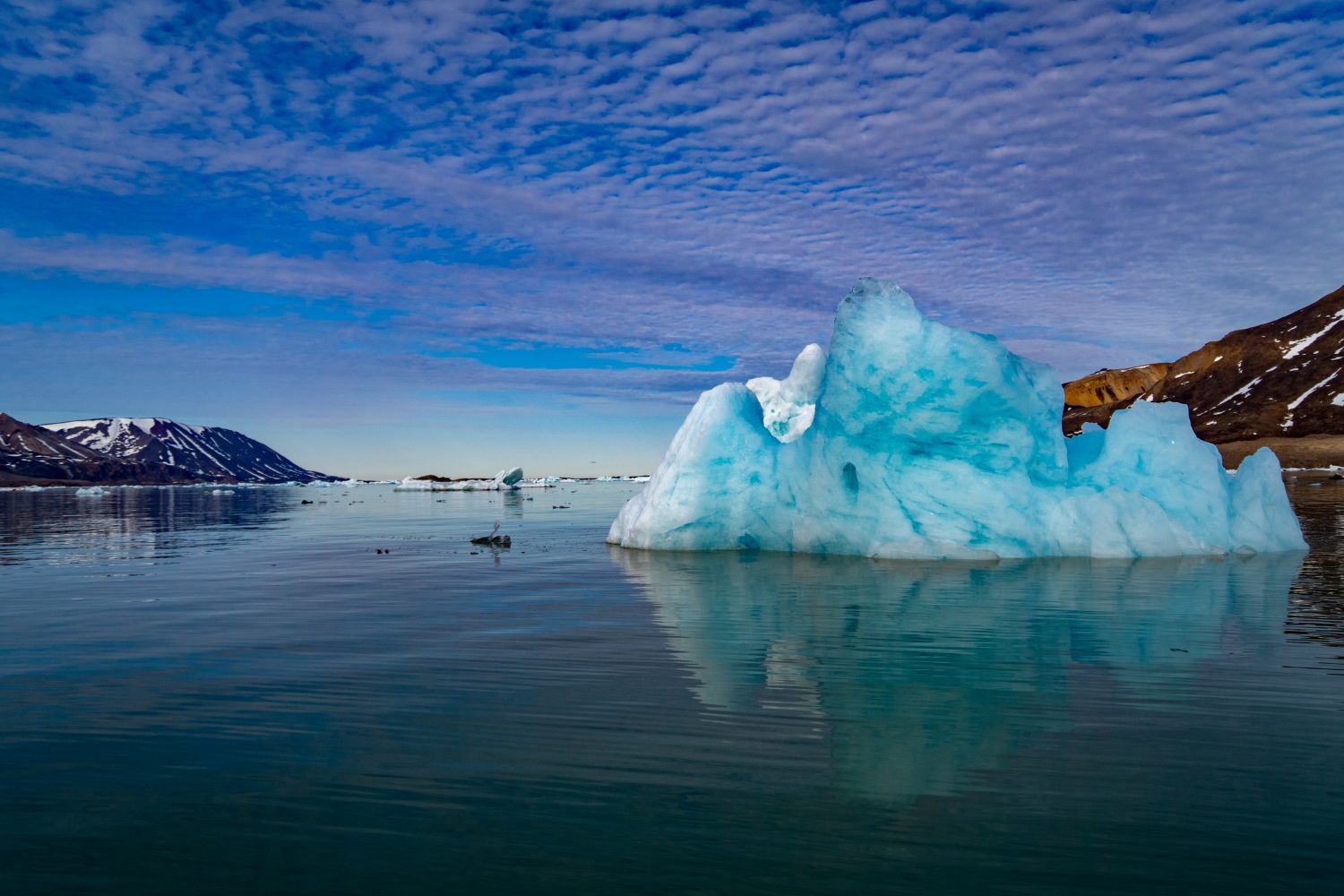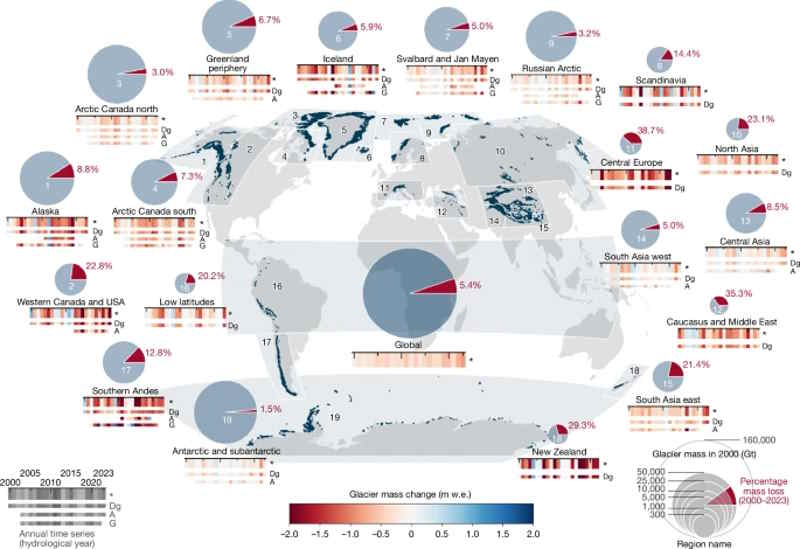Glaciers have lost 273 billion tons of ice since 2000, reducing global volume by 5%. A Nature study warns of rising sea levels and freshwater shortages, affecting 2 billion people worldwide.

@Canva
Glaciers all over the globe, apart from those in Antarctica and the Arctic, have lost an incredible 273 billion tons of ice between the year 2000 and the present. This is as much water as the whole global population would use in 30 years.
Results come from a worldwide survey organized by the World Glacier Monitoring Service (WGMS) and published in Nature. Scientists at the University of Edinburgh and the University of Zurich found that, to the end of this century, the glaciers have lost roughly 5% of their total volume.
Losses regionally also varied significantly. Antarctic and sub-Antarctic islands’ glaciers, for example, lost around 2% of their volume.
The research
According to the research, this accelerated melting is leading to a rapid draining of regional freshwater reserves and rising global sea levels at a faster pace.
Alone in their isolation from the Greenland and Antarctic continental ice masses, glaciers spread over more than 272,200 square miles in 2000 and contained 121,728 billion tons of ice globally.
Glaciers have subsequently lost an estimated 5% of their surface area worldwide. Regionally, this varies between 2% in the Antarctic and sub-Antarctic islands, to a staggering 39% in Central Europe.

@Nature
Glacier melting is not only remoulding landscapes but also reducing regional freshwater resources, impacting distant communities and regions already under water stress.
“About 2 billion people depend on glacier meltwater, and their retreat is a major problem for society,” said Noel Gourmelen, lead co-author of the study. “It’s not just that we are losing them from our landscapes; they are an essential part of our daily lives.”
